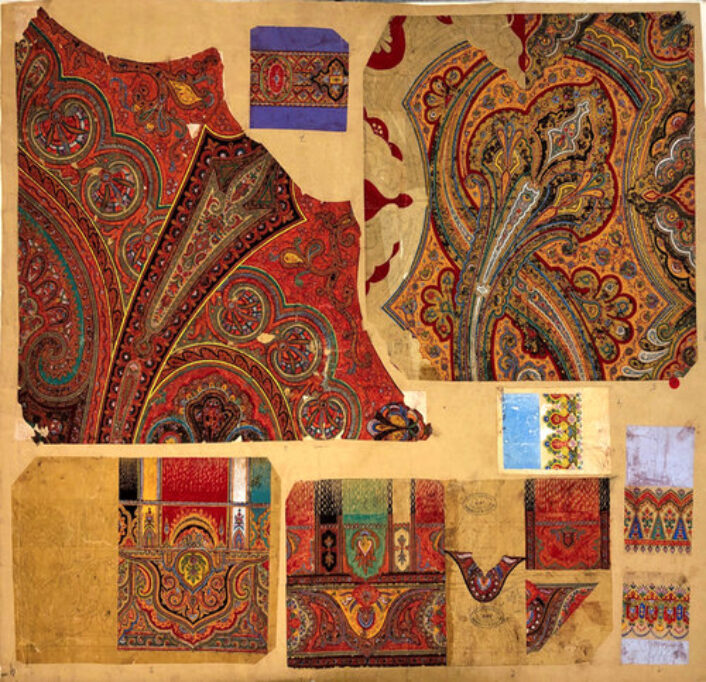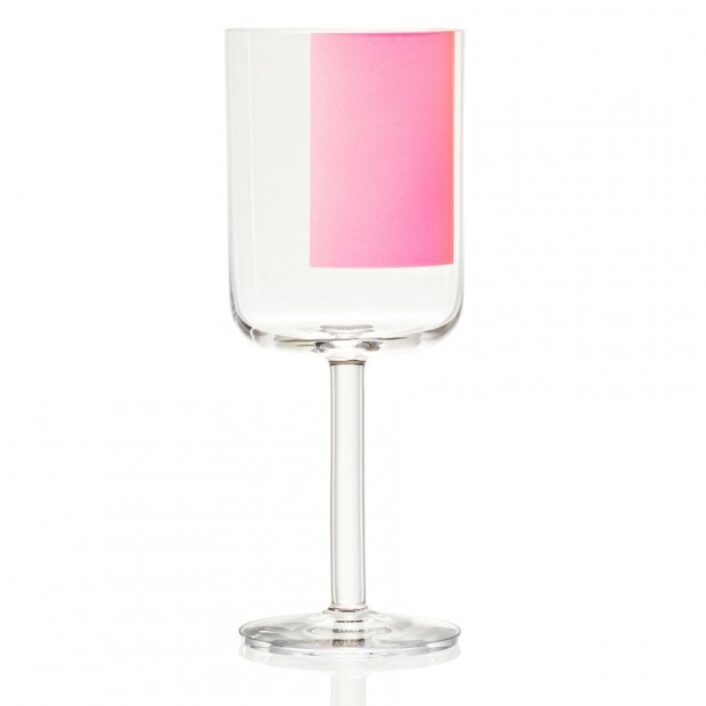Culture
The magic behind Etro
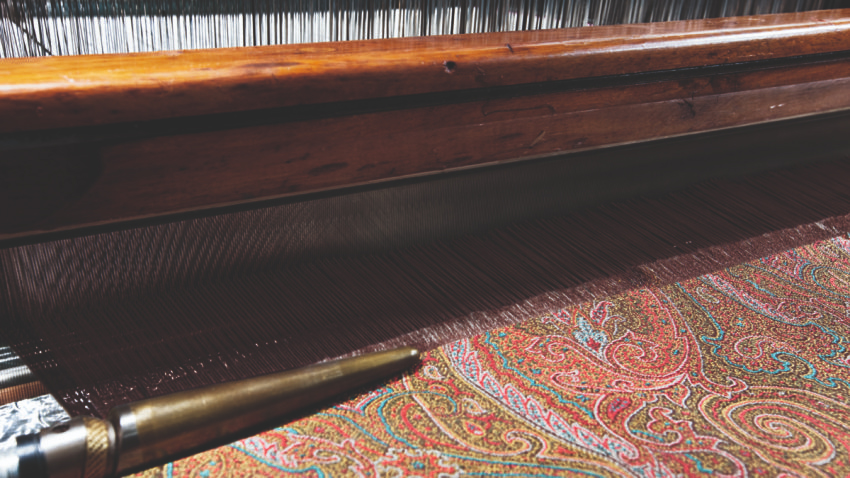
Weaving paisley.
Image courtesy of: Milanodabere.it
Over five decades past its founding, Etro remains on of the world’s most esteemed designer brands. It was 1968 when Gerolamo “Gimmo” Etro started the business as a textile design company. The Milan-based label remains connected to the paisley pattern and variations on this theme… a subject which consumed Gimmo after his travels to India. Similar to the Mughal Empire courtiers and the 18th-century Parisians, Gimmo was obsessed with the tear-dropped motif and made this his signature element.
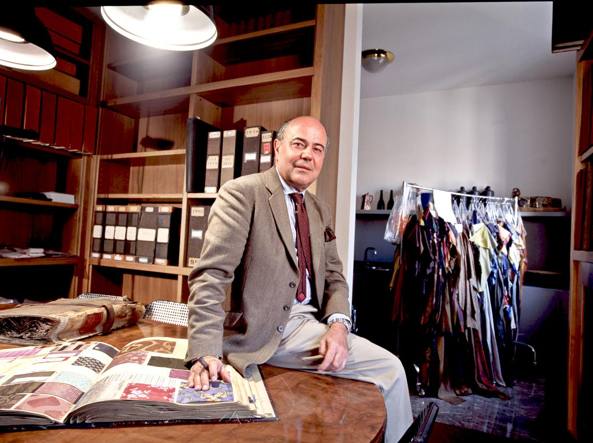
Gerolamo “Gimmo” Etro.
Image courtesy of: Courier Dealla Sera
Etro has always been (and remains) a family business. Even when the children were young, Gimmo would bring them to the office on Saturdays. The office resided in a beautiful 1920’s building in eastern Milan… and here the four siblings would draw and play games until they were old enough to help out.
A Renaissance man who loved art and literature, Gimmo started the company in order to fill the need of providing textiles to the growing Italian ready-to-wear industry. His wife, Roberta, was an antiques dealer and the pair took much pleasure in collecting antique paisley shawls and dressing gowns.
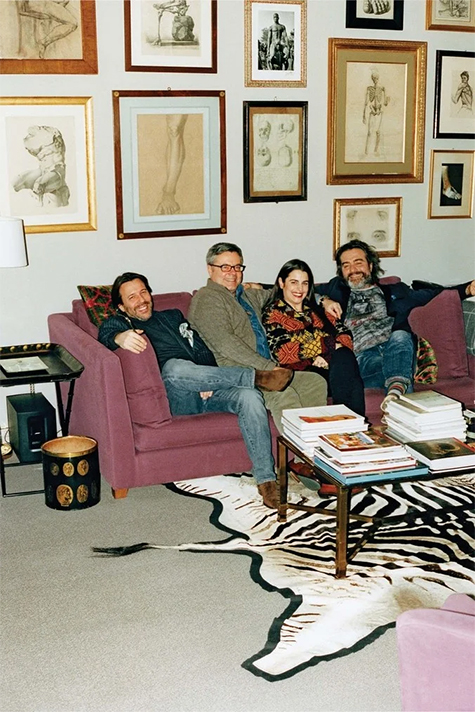
Ippolito, Jacopo, Veronica, and Kean Etro in the living room of Jacopo’s Milan home.
Image courtesy of: W Magazine, photography courtesy of: Jonas Unger
The company is now run by Gimmo’s four children while he remains an unassuming advisor. The eldest is Jacopo who skipped university and has worked his way up to head the accessories, home fabrics, and textiles divisions. The Creative Director of Etro’s Home and Textile Division has been at Etro since 1982. Kean has been assisting customers at Etro since he was 22 and is the Creative Director of Menswear. Kean is a strong supporter of products manufactured in Italy and is involved with the many factories in the Itria Valley which make jackets, shirts, and suits. He stays connected to everything that is produced down the Italian peninsula. Ippolito is the Chief Executive of Etro USA. With a broad interest in biology, Ippolito’s iconographies have found their ways onto fabrics. Veronica is the Creative Director of Womenswear. As a voracious traveler, Veronica’s vision extends far outside the workshop and her aesthetic is global; sometimes Moroccan designs will appear on traditional kimono and other times Japanese calligraphy will coincide with Southern California’s surf-and-skate culture.
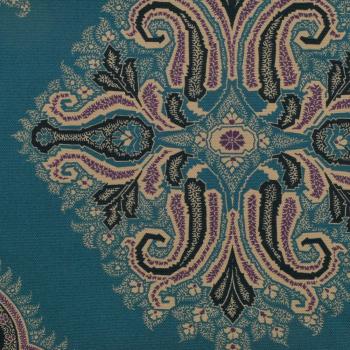
Bogor Pattern from Clarence House Fabrics. The damask repeat pattern uses smaller damask shapes with feather extending outward between complex geometric paisley shapes. Spread over on the clean background, this combination is very elegant.
Image courtesy of: LA Design Concepts
Etro is different from many other fashion houses in that rather than coffee table books on fashion designers and photographers everywhere, they have a very eclectic collection of well-loved books on everything from botany to Victorian wallpaper. They also have treasures from tribal Africa, India travel guides, and a bound collection of fabric swatches.
Fragments of embroidered silks and cashmere from the Silk Road route line the shelves and art, everything from Pop Art to Art Antiquities, is present for inspiration. No one could say there is a lack of creative juices flowing in the workshop.
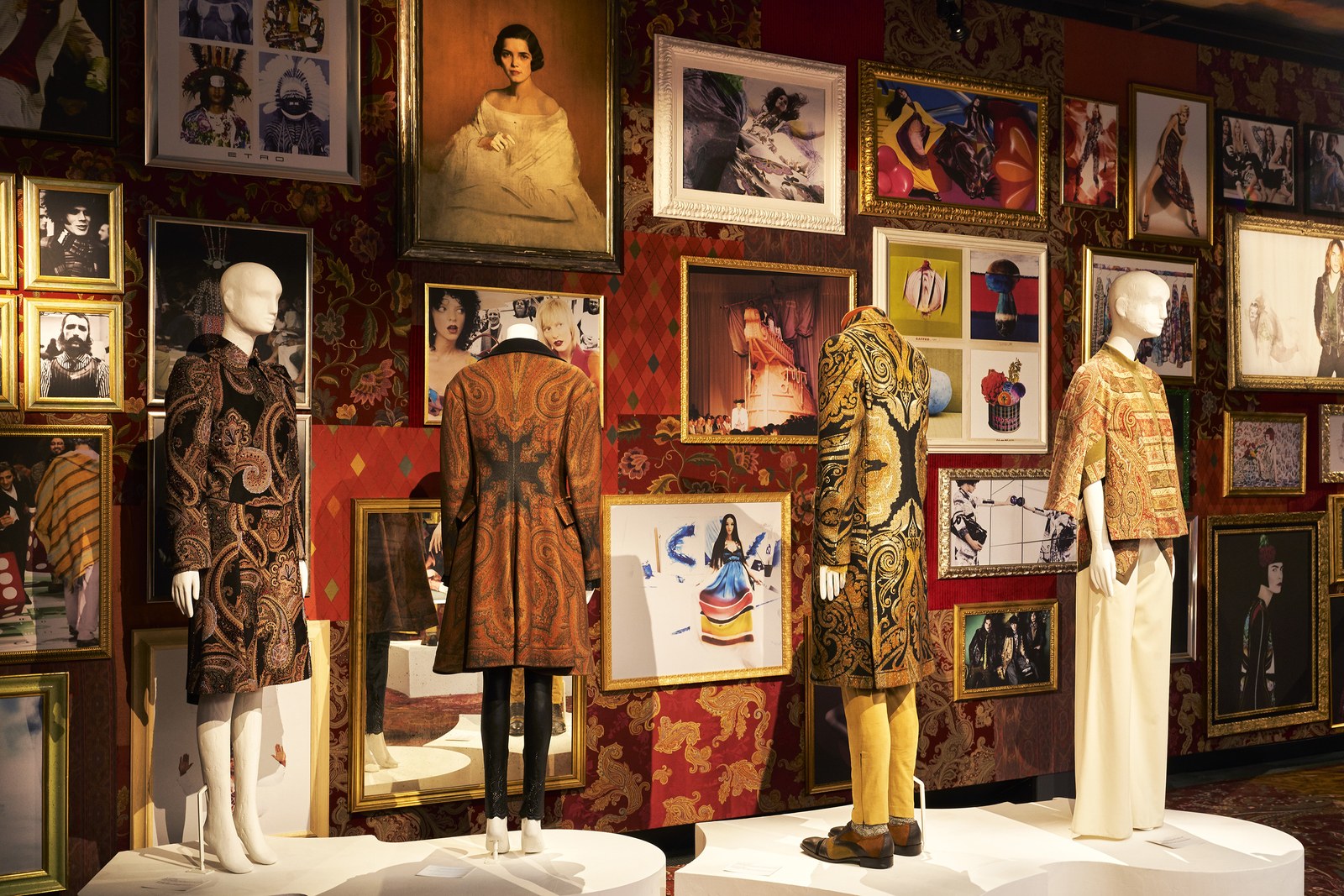
Etro’s Milan exhibit.
Image courtesy of: Vogue
Trends come and go, and Etro has remained successful because they have stayed true to their core identity of patterns and colorful collections. About the family’s symbol, Kean Etro said, “The Etro Company started in 1968 when my father began to play with the paisley design on his fabrics. It is an ancient decorative symbol born in Mesopotamia and it represents the tree of life, the union between the depths of the earth and the infinite space of the sky. Today more than ever we have to recognize the millenary symbolism of the tree and look at nature with devotion and respect.”
